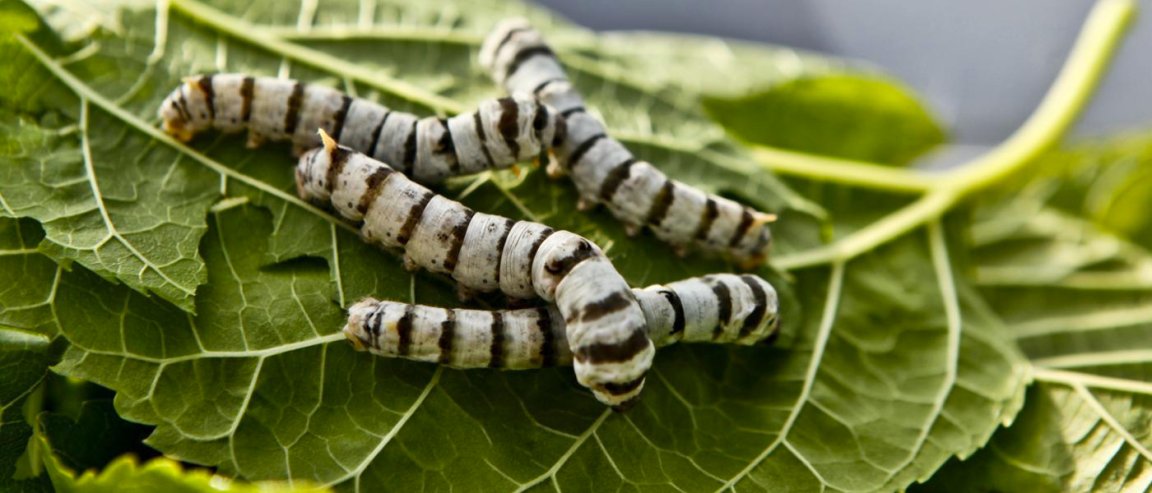
Worm Superfood
Silk is a naturally sourced fiber popular in textile applications not just for its beauty, but also for its mechanical strength, and one study has now reported that the gossamer threads become even stronger and tougher when silkworms are fed carbon nanotubes and graphene.
Graphene, a carbon nanoparticle considered a “miracle material,” has shown massive potential in energy, electronics, medicine, and more. Silkworms, the larvae of silk moths, spin their threads from silk proteins produced in their salivary glands, so a study led by Yingying Zhang from Tsinghua University examined the effects of adding graphene to the silkworms’ diet of mulberry leaves.

The researchers sprayed mulberry leaves with aqueous solutions containing 0.2 percent by weight of either carbon nanotubes or graphene, and then collected the silk after the worms spun their cocoons. Collecting the as-spun silk fibers is standard in silk production, so feeding the silkworms the carbon nanotubes and graphene was a much simpler method than treating regular silk with the nanomaterials dissolved in chemical solvents after collection.
According to the study, the carbon-enhanced silk was twice as tough as regular silk and could withstand at least 50 percent higher stress before breaking. Zhang’s team tested conductivity and structure after heating the silk fibers at 1,050°C (1,922°F) to carbonize the silk protein, and unlike untreated silk, the carbon-enhanced silk conducted electricity. Additionally, spectroscopy and microscopic imaging showed that the modified silk fibers had a more ordered crystal structure.
Textiles of the Future
Garments made using smart textiles have so many more potential uses than those created using traditional materials. A conductive fabric using this carbon-enhanced silk could have applications in biomechanics, showing an athlete the tension and pressure applied on areas of the body during exertion. It could be used in tech for electronic clothing that can “talk to our smartphones,” and scientists creating biodegradable medical implants could potentially incorporate these enhanced silks into their work.
According to materials scientist Yaopeng Zhang of Donghua University, the method used by the team at Tsinghua University is an “easy way to produce high-strength silk fibers on a large scale,” so we could be one step closer to an exciting future of readily available wearable tech that could improve the lives of everyone.